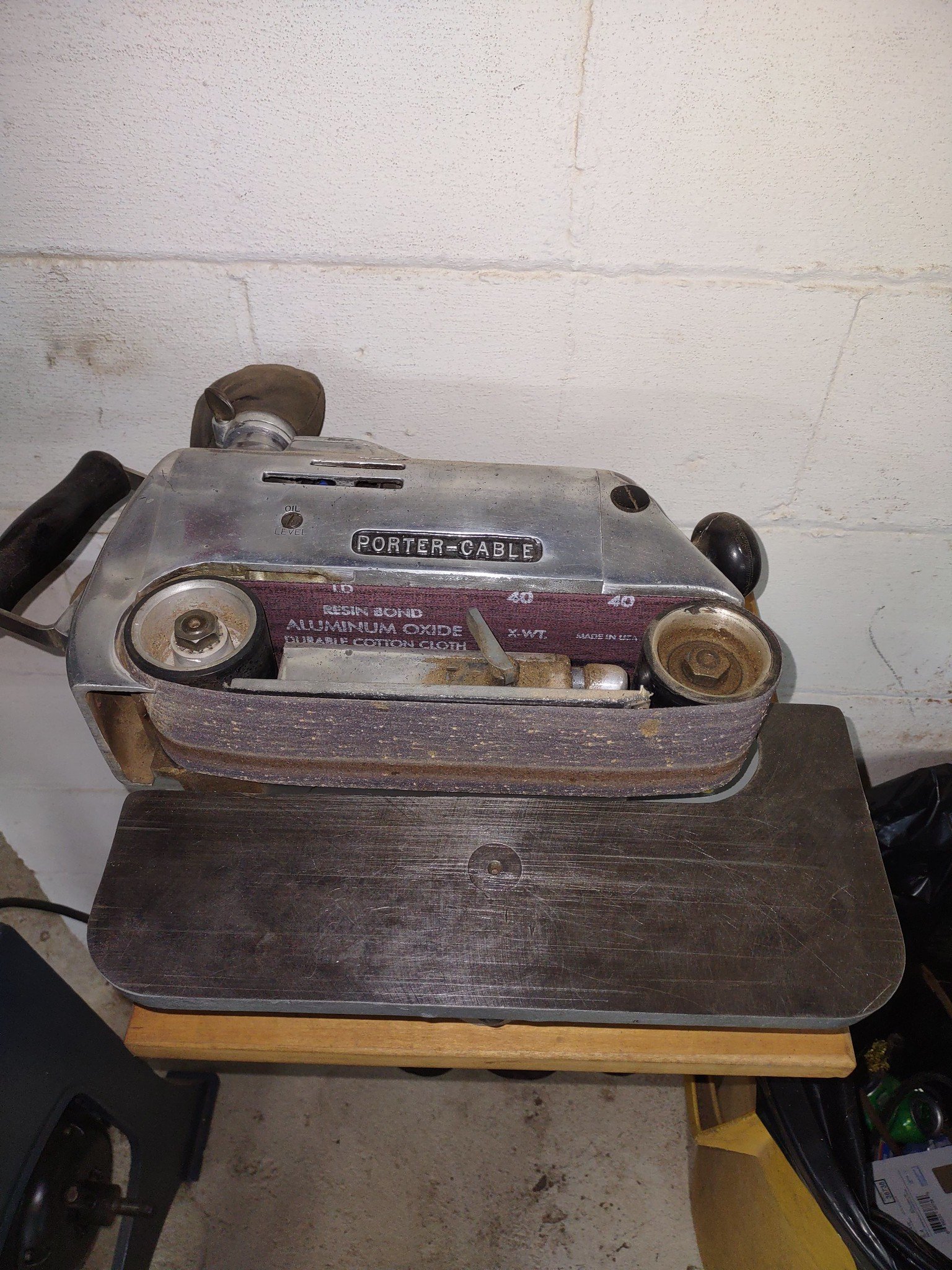Long live the locomotive-the story of the Porter-Cable Take-About sander-Part four
I'd like to shine the spotlight on a sander that shouldn't have to share the stage equally with another model in this little history because it has no equal. The Take-About in question wasn't the biggest, or fastest, or longest made, but it was the most well-rounded design in all the years Porter-Cable offered worm drive sanders; great for stock removal, but controllable enough for finer work, with superb dust collection, excellent balance and surprisingly little noise, and virtually indestructible in the hands of any higher primate.
I give you the BB-10, or, as Porter-Cable called it, the Tool of Tomorrow.
The BB-10 was the best belt sander ever built. Fight me.
First encountered in 1942, the BB-10 was the result of lessons learned from the B-10, of which it is the only close descendant. The BB-10 kept to the basic layout of a 1hp, 3"x27" sander with dust collection, but the issues with heat that plagued the B-10 were firmly dealt with in the new design. The BB-10 has both a fan for keeping the motor cool and an impeller for moving the dust which allows each part to do its job well, instead of one compromised component struggling to do either task. Because of the care taken in construction ( the motor fan is an axial squirrel cage affair and the dust impeller is a cast aluminum, balanced job), the BB-10 has better dust collection than any of its littermates, and rarely breaks a sweat under even the heaviest tasks. The intermediate gear was also replaced by two sprockets and a leaf chain fully 3/4" wide, which helped lower the amount of noise.
Ain’t it a beaut?
The new sander in town also did away with what I refer to as the goblin shark profile of the B-10, opting for the distinctive concave face that gives it much of the look of a streamlined locomotive engine, complete with cow catcher. This isn't just for looks- not only does it beef up the front of the sander frame to better withstand the rough and tumble life of a belt sander, it also lends itself to a modified grip for using the sander on the vertical plane; simply hold the front knob in the web of your hand between thumb and index finger, keeping the heel of your hand away from the idler pulley, and the BB-10 can be held against a wall or other vertical surface comfortably.
Speaking of using the sander at an odd angle, the BB-10 could use the B-10 bench stand, which converted it into a species of edge sander.
I have the good fortune to not only have one of these accessories but to own a BB-10 with a special order rubber-coated front roller to use on it; this allows the user to sand inside curves smoothly, which doesn't always work well with the bare aluminum pulley found on most examples.
The BB-10 had four known running changes during its nine-year run, most of which were cosmetic- the forked switch lever became a capped one that could be removed without dismantling the switch cover, the front knob stud went from having a hexagonal post to a round one, then back again, and the wooden handle was discontinued by 1944 or so, being replaced by the bakelite loop shared with the later 500 ( the A-2 would keep its unique smaller wooden handle until 1958, but the larger maple grip would only be found on the BK-12 saw and RC deck crawler after '44- it would never reappear on another Take-About). Where it counts, the BB-10 never changed, and never had reason to, being an irreproachable machine and a home run from the word go.
The BB-10 retailed for 148.00 in 1945, or about 2,200 dollars. It was worth every penny to the person with a lot of sanding to do, and while I reserve specific tasks for each of my Take-Abouts I will admit that I reach for one of my BB-10's (Yes, I own four of them. No, they're not for sale) for the majority of sanding jobs.
Vital statistics-
BB-10: 3"x27" belt, 1475 fpm,23 lbs, , 1 hp motor
By 1950, the success of the 503 ( which we'll discuss next time) prompted Porter-Cable to develop a larger version, the 500, and for one short year, the two juggernauts stood cheek to jowl in the catalogs. The newer sander would ultimately win out and go on to be offered until the Pentair years, but the curtain fell on an absolute masterpiece by the end of 1951.


